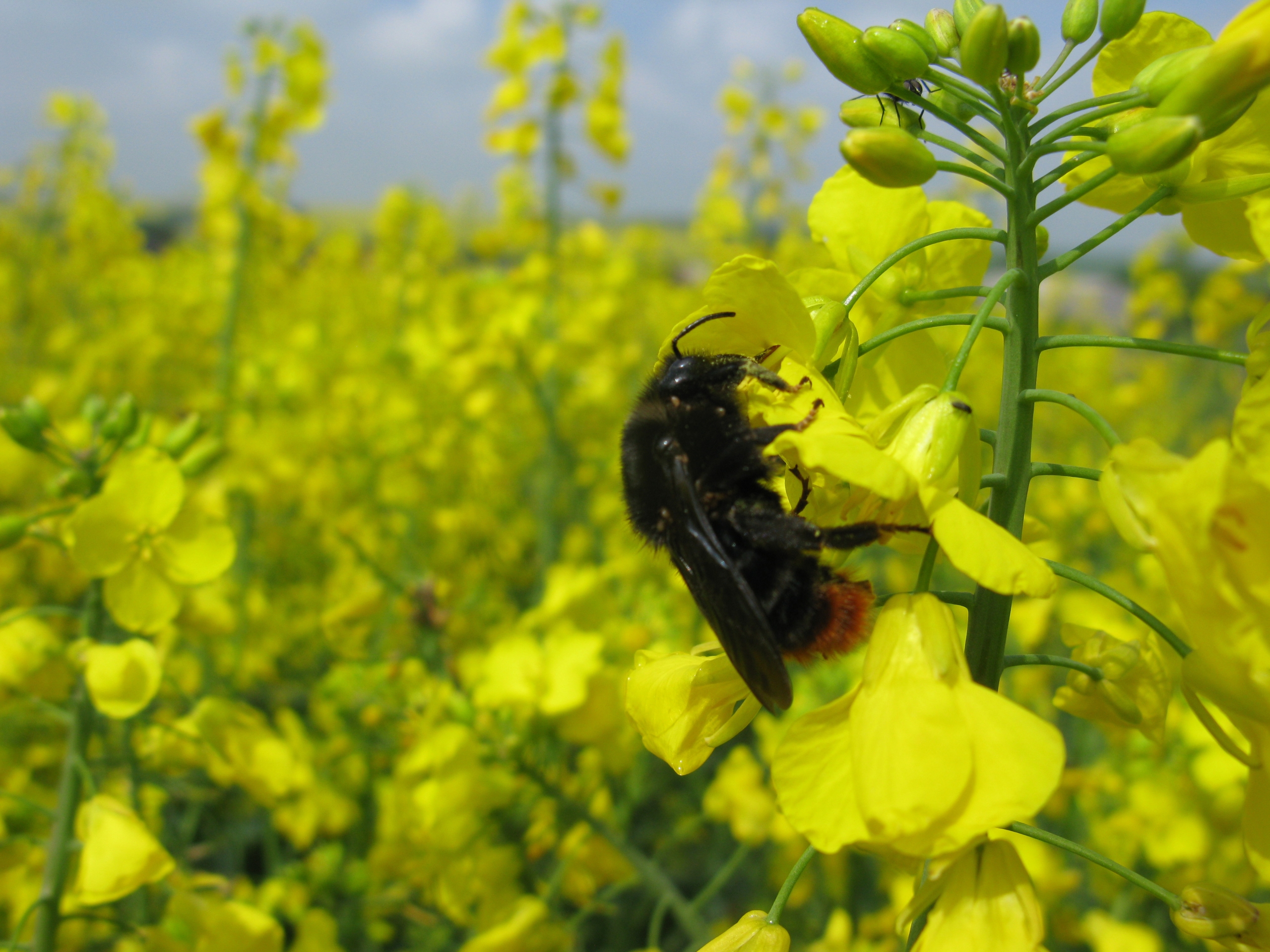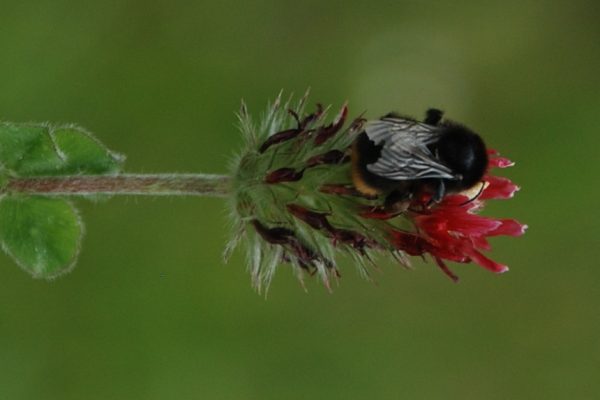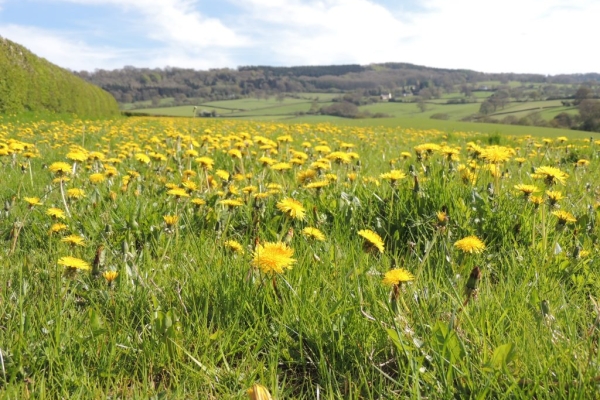Bringing the buzz to the Fowey Valley: Mixing bumblebees and sustainable farming
Can you make land both a productive farm and also good for bumblebees? This is a question that has been occupying the minds of the Bumblebee Conservation Trust, the University of Exeter and landowners and managers round the Fowey Valley in Cornwall.
Bumblebees are excellent pollinators, particularly of horticultural crops such as soft fruits, courgettes and tomatoes, as well as field crops such as oilseed rape and field beans. In grazing systems, bumblebees pollinate many of the nitrogen fixing legumes found in pastures such as white clover and red clover. Bumblebees move pollen from the male parts of the plant to the female parts – by doing so they help with fertilisation which in turn can lead to increased fruit or seed production. In tomatoes, bumblebees when used in glasshouses have been shown to nearly double the number of tomatoes per plant! In apple orchards in the UK, the increase in number of apples due to bumblebee visits was estimated to be worth £18.6 million in 2013. Not bad for an insect.
Bumblebees also pollinate a whole host of wild plants, and are a key part of our countryside. Unfortunately bumblebees are at risk – 2 species became extinct in the UK in the last century and currently 8 out of the remaining 24 species are listed as conservation priorities due to their widespread declines.
Inspired by the work of the Bumblebee Conservation Trust and the University of Exeter’s work on land management for bumblebees, a group of land owners and managers in the Fowey area of Cornwall wanted to know what they could do to benefit bumblebees. The Fowey Valley Bumblebee project was born, funding secured and I was employed as a project officer to test a tool developed by the University of Exeter called BEE-STEWARD in the beautiful Fowey Valley landscape of mixed agriculture and forestry.
BEE-STEWARD is a decision support tool that investigates the impacts of changes to land use or land management on bumblebee populations. Unlike field data, that can take years to collect, BEE-STEWARD can predict the impacts into the future and be used to look at different possible options for farmers and land managers. My role as project officer is to use land management information from our partners to run BEE-STEWARD to look at the predicted bumblebee populations. The model can also highlight farm areas where potentially there are fewer visits by bumblebees for additional action. This is particularly important for some species of bumblebee called ‘door step foragers’ which commonly only forage within 500m of their nest.

I am also out surveying bumblebees using the BBCT’s Bee Walk to check if the model is predicting the bumblebee numbers well and if the model can be improved. We can then understand what recommendations we can make to other landowners and land managers, and if the changes that are good for bumblebees can be carried out also have benefits for farm businesses. Farmers are critical for ensuring the countryside is buzzing with wildlife into the future and we hope to be able to help them do so!
The Fowey Valley Bumblebee Project is a partnership between the Bumblebee Conservation Trust, the Duchy of Cornwall Estate, The Lanhydrock Estate Company, the National Trust, Trewithen Dairy, and the University of Exeter, funded by the Prince of Wales’s Charitable Fund and Kelly’s of Cornwall. The project website is https://www.bumblebeeconservation.org/fowey-valley-bumblebee-project/ or follow us on twitter @buzzingfowey
Rosalind Shaw writes of herself “I have always been passionate about how we can live sustainably, and in the UK most of our countryside is used in one way or another, whether it’s for grazing, arable crops or forestry. My other main interest is the links between plants and the animals and insects associated with them, so it seemed natural to end up researching pollinators and other beneficial insects in farmland. Having worked as a researcher at several Universities, I now work at the Bumblebee Conservation Trust as a project officer.”
Images: Header image shows part of the Fowey Valley in Cornwall. Both images © R.F. Shaw, CC BY-SA







